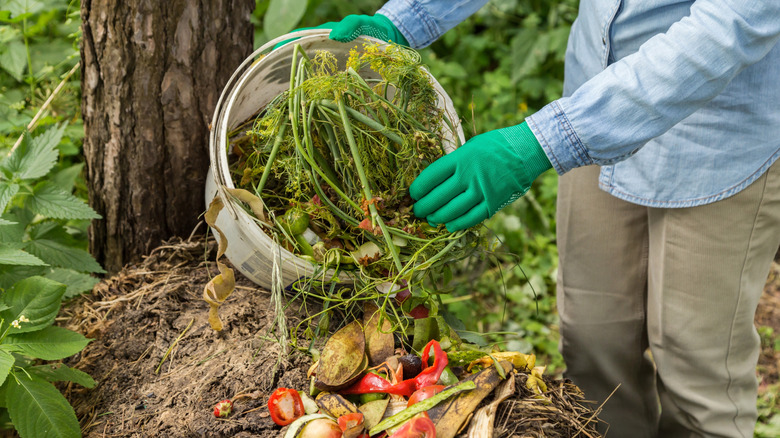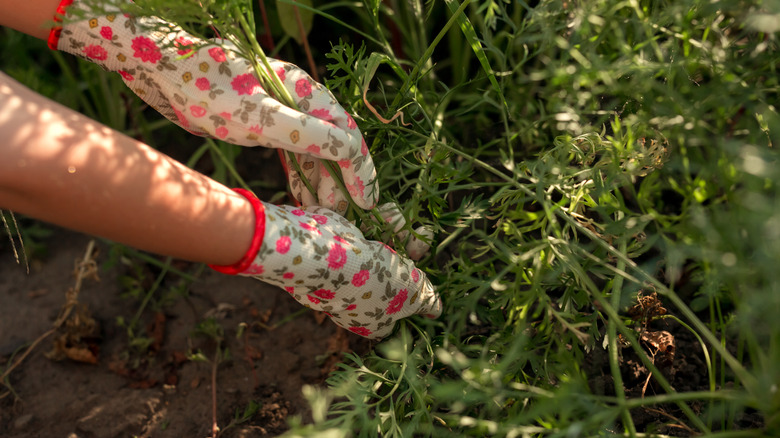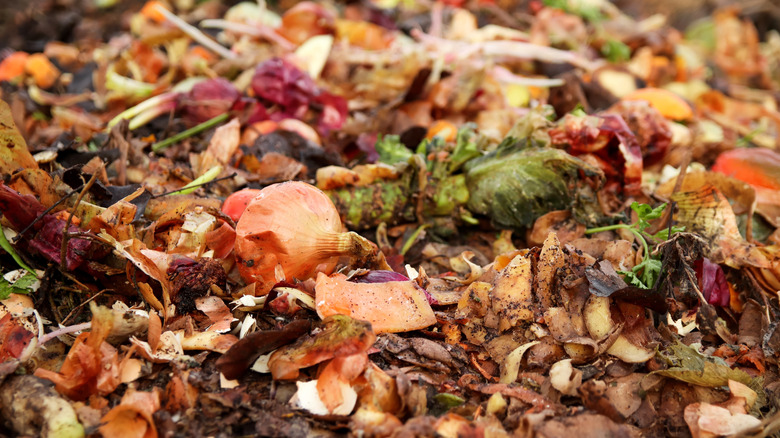How To Keep Your Cool Compost Pile Free Of Weeds
Cool composting offers a low-maintenance way to recycle garden waste, but the slower decomposition time can unintentionally spread weeds if not managed properly. There are some major differences when comparing hot and cold composting. Unlike hot composting, which can kill weed seeds by creating an environment that develops high temperatures during the decomposition process, cool composting lets materials decompose at lower temps, breaking down organic matter gradually over several months. If you're trying to keep weed infestations out, you'll need to carefully select your materials and use a little strategic layering. Knowing what and what not to add will help you maintain a productive cool compost pile without worrying about weeds sprouting up throughout your garden.
The simplest way to avoid weeds in your compost is a technique called "pre-baking." This doesn't mean literally cooking, but rather allowing pulled weeds to completely dry and die out in the sun for a couple of weeks before adding to your compost. There are some weeds, like bindweed or quackgrass, that even this method may not work on and should probably be left out of your cool compost completely. Cool composting works best with balanced layers of green and brown materials. Green materials, like fresh grass clippings or coffee grounds, provide nitrogen to your compost while brown materials, like dry leaves and cardboard, add carbon. Also, turning the pile occasionally can help disrupt any potential weed growth while aerating the decomposing materials.
Master the pre-baking technique for weed-free compost
Pre-baking will help turn potential weed problems into safe compost by simply utilizing the sun's heat to dehydrate and kill weed seeds and roots before they enter your pile. Start by spreading freshly pulled weeds in a thin layer on a sunny, paved surface. Metal sheets work well too, as the reflected heat accelerates the drying process. Every few days turn the material to make sure all sides are getting direct sunlight. Allow the weeds to bake in dry weather for about 7 to 10 days, during which the plant materials should become brittle and bleached-looking. The whole process works best during summer months when the sun is more intense and can provide enough heat during the day to be successful.
For tougher weeds with more extensive root systems, like dandelions or thistles, add some extra days to the pre-baking. Also, consider chopping up longer roots into smaller pieces to make sure they dry completely. You can use old window screens to create a dedicated pre-baking zone. This not only increases airflow around the materials, it prevents any accidental re-rooting ensuring the weeds will not survive. Once properly pre-baked, the weed material is safe to add to your DIY compost pile, where it will break down naturally without the risk of growing.
Other strategies for weed-free cool composting
Preventing weeds from getting into your cool compost should start at the collection stage. Make sure you know what kind of weeds you're adding, and think twice before adding certain common weeds into your compost. Never add mature weeds with seed heads or persistent root systems into your pile, as these can survive during the cool composting process. If you're unsure of what is or isn't good to use, try the black bag method. Take your green materials and seal them in a black plastic bag for several weeks until they decompose into a sludge. This mix will break down faster in your compost and will almost ensure no weeds can survive. You can also create physical barriers within your compost setup by lining the bottom with cardboard to block any weed seeds from coming up from below.
The layering technique is another good way to avoid weeds gaining traction in your compost. Alternate layers of fresh green materials with thicker layers of brown materials. This creates an environment where weed seeds are less likely to find enough light and warmth to germinate. Keeping consistent moisture levels is important as well, your compost pile should be as damp as a wrung-out sponge. Weed seeds can remain dormant but viable in dry conditions. Finally, pay attention to the seasons when composting. During the spring growing season, increase the ratio of brown materials to help slow any potential germination. During the fall, chopping leaves extra fine can create a denser mat that will smother the weeds, keeping them from the oxygen and sun they require.


